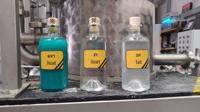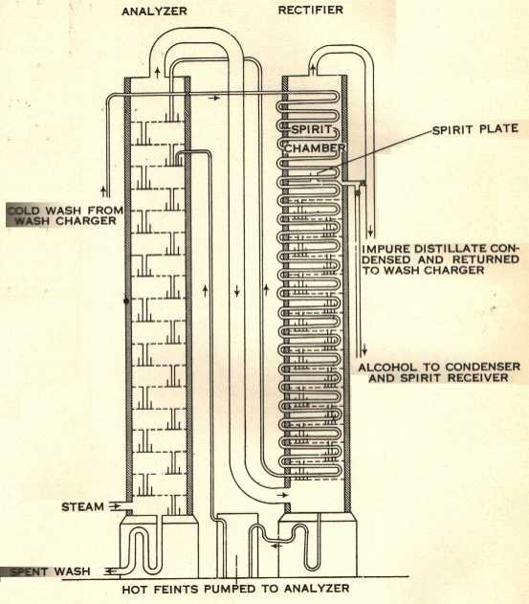TLDR
What is a Coffey still?
The Coffey still is a column variation of the traditional pot still which allows for continuous distillation rather than batch distillation. It was patented by Aeneas Coffey in 1830, however this was a refinement of existing stills and by no means a new concept with similar patents dating to at least 1922.The Long Read
Contents

What is continuous distillation?
Continuous distillation refers to the process by which a mixture of liquid, typically alcohol and water, is fractionally separated or split via the application of heat. Unlike conventional batch distillation which requires the manual removal of unwanted liquids before further distillation can occur, continuous distillation allows for a looping system meaning that distillation can continue with little to no interruption. This approach has a number of benefits over batch distillation.
Benefits of Column Distillation
- To be able to distill continuously
- To produce cheaper alcohol than before
- To produce at a much higher speed
- To be able to use practically any grain
Disadvantages of Column Distillation
- Column stills remove most of the fatty oils and flavour characteristcs of the grain
- Heating cannot be manipulated to change the flavour
How Does the Coffey Patent Still Work?
Continuous distillation leverages a column approach whereby liquids are poured over a series of cascading plates, liquids with low boiling points such as alcohol will vaporise and be funnelled through a cooler or rectifier, while elements such as water with a higher boiling point will be cooled, funneled out and then again be poured over the heated plates. This cyclical system allows for the ongoing removal of liquids separation of liquid in which a mixture is continuously fed into the process and separated fractions are removed continuously as output streams.

A Still With Several Names
The patent still method of distillation goes under a number of differing names, these range from Coffey Stills (named after Aeneas Coffey) to Column Stills (alluding to the column nature of the stills), continuous stills or patent stills
Who Was Aeneas Coffey?
Aeneas Coffey is the man largely credited with the commercial introduction of continous distillation. Aeneas Coffey was born in Dublin in 1780 and died in England on November 26, 1852. He worked as a tax officer and was responsible, among other things, for closing illegal distilleries. As an Irish engineer, in 1831 he improved the column still (also called Coffey, Patent or Continuous Still) developed by Robert Stein (Kilbagie) in 1826 and used for continuous distillation. This made it possible for the first time to produce large quantities of whisky cheaply. This whisky, called grain whisky, was in many ways the basis for Diageo predecessor Distillers Company Limited achieving its dominance, if not the entire Scotch whisky industry.
The Dominant Production Method
By far the largest proportion of distillation of alcohol be it whisk(e)y, rum, vodka or gin is produced in patent stills. While only 6 (or 7 if Loch Lomond is included) distilleries are actively producing grain whisky in Scotland their output is far more massive than the combined output of the over 130 single malt distilleries currently in production.
Previous

